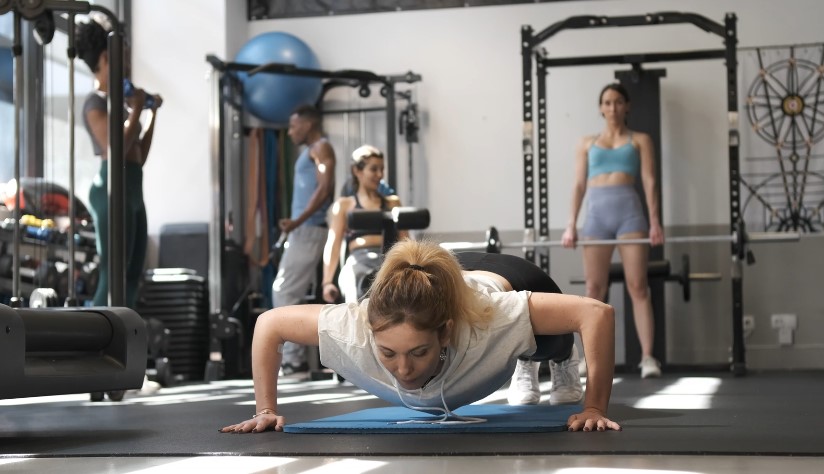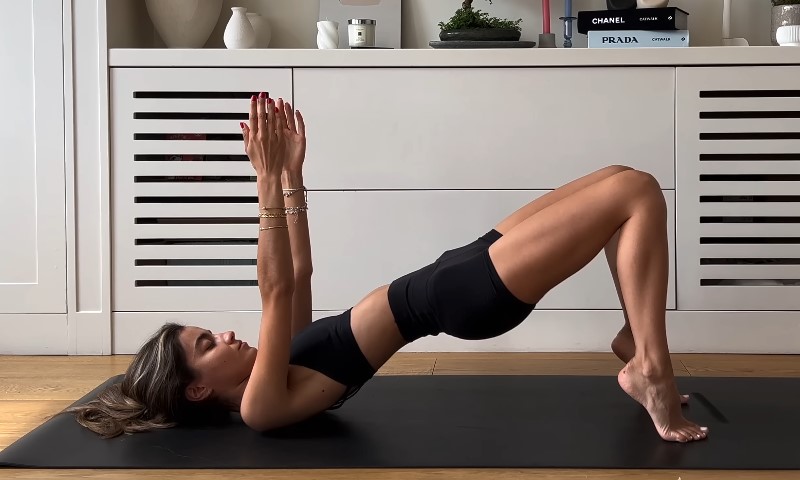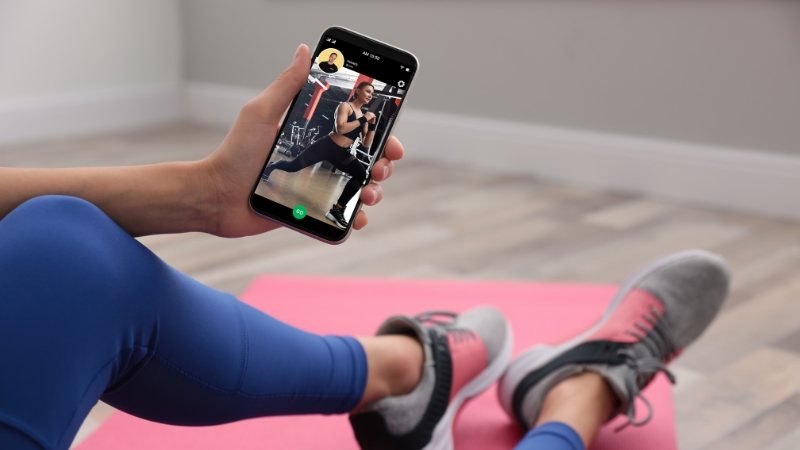
Share Post:
The secret isn’t doing everything perfectly, it’s doing the right things consistently. The balance lies in three principles: prioritization, scheduling with intention, and energy management – not time management.
As a trainer who went through full-time university, held a job, and still kept my body and mental health intact – and now helps clients do the same – I’ll tell you what works, what doesn’t, and how to stay sane while doing it.
Table of Contents
ToggleFrom Burnout to Balance
There was a point in my life where I was training clients at 6 a.m., heading straight to class until 4 p.m., then grinding through a shift at work until 10. I ate on the go, studied in 30-minute chunks, and had to earn every hour of sleep. I started burning out. My workouts suffered, my grades dipped, and I was mentally fried.
Then I restructured everything – based not just on what sounded smart, but on what science and habit psychology actually say about human performance. I created a system. And since then, I’ve taught it to clients in the same boat – college athletes, working students, and busy professionals.
One of the most driven clients I’ve ever worked with was working a part-time job while pursuing her bachelor’s in nursing, and still managed to stay consistent in the gym and take care of her mental health. Watching her transform wasn’t about watching someone do more, it was about helping her do better. When you get the system right, balance becomes not just possible, but powerful.
Here’s how we do it.
1. Build a Schedule Around Energy, Not Time

Your brain and body have peak performance windows – aka circadian rhythms. Use them.
Morning Person? Lift in the A.M.
Night Owl? Study at night, train midday if you can.
Rather than forcing a 5 a.m. workout or late-night study marathon, align your tasks with your natural energy rhythms. Use a method called “Chrono-matching” – matching tasks with your cognitive or physical peak.
2. Use the “3 Bucket System”
Imagine your week has three buckets:
- Fitness
- Academics/Work
- Recovery (mental & physical)
Each gets filled deliberately, and not all at once. You can’t go 100% in all areas every day – that’s not balance, that’s burnout.
Here’s how to fill your buckets wisely:
- Fitness (3–4x/week full-body workouts) – 45–60 mins max. Use compound movements. Think: squat, hinge, push, pull, carry.
- Work/School – Use the Pomodoro Technique (25 min work / 5 min break) to stay productive without frying your brain.
- Recovery – Sleep 7–9 hours. Non-negotiable. Active recovery like walking, stretching, or even just quiet time matters too.
3. Train Smart, Not Long

Research shows that intensity beats duration when it comes to fitness, hormone regulation, and long-term adherence – especially when your schedule is tight.
One of the biggest mistakes I see students and professionals make is thinking they need to spend 90 minutes to 2 hours in the gym to get results. That kind of volume is unnecessary for 90% of people – and it’s downright impossible for someone juggling work and classes. Instead of burning time, the focus should be on burning energy efficiently.
This is where training smart comes in. The goal is to maximize stimulus while minimizing time. You do that by using full-body workouts, supersets, and lifting with intent with help of your certified personal trainer or just on your own. You don’t need to isolate every muscle or do a thousand exercises – just hit the big lifts, use good form, and keep the rest times tight.
Efficient Training Blueprint:
| Element | Recommendation |
| Frequency | 3–4 Days per Week |
| Workout Type | Full-Body Splits |
| Duration | 45 Minutes per Session |
| Format | Supersets (Push/Pull, Lower/Upper) |
| Equipment | Barbell, Dumbbells, Bodyweight |
Sample Workout Superset Format
- Superset 1: Barbell Squats + Pull-Ups (Lower + Upper Pull)
- Superset 2: Bench Press + Romanian Deadlift (Upper Push + Lower Hinge)
- Finisher: Plank Variations + Farmer’s Carries (Core + Loaded Carry)
This approach boosts your metabolic rate, enhances dopamine and endorphin production, and helps you maintain muscle mass – even during stressful, time-crunched periods. You get the maximum return for every minute you spend in the gym.
4. Meal Prep for Mental Clarity and Muscle Maintenance

Proper nutrition improves everything from brain performance to emotional regulation and immune function. Think of food as fuel for your body and your brain.
I tell every client: your brain runs on glucose, your muscles run on protein, and your sanity runs on structure. If you’re eating inconsistently or skipping meals to save time, you’re likely sabotaging your workouts and mental focus without even realizing it.
The solution? Simplify your meals and build a repeatable system.
Quick Nutrition Strategy:
| Meal Prep Tips | Examples / Notes |
| Prep 2–3 Base Meals on Sunday | Chicken + Rice + Veg, Turkey Pasta, Quinoa Bowls |
| Snack Smart | Greek Yogurt, Protein Bars, Fruit, Almonds |
| Hydration Goal | 2–3 Liters of Water per Day |
| Caffeine Cut-off | No caffeine after 2:00–3:00 PM |
| Avoid Skipped Meals | Eat every 3–5 hours to stabilize energy levels |
By prepping meals in advance, you eliminate decision fatigue, save time, and reduce the chances of grabbing junk food or skipping meals entirely. Your body and mind operate better with steady blood sugar, and your workouts are stronger when you’ve got fuel in the tank.
One thing I always stress: don’t fear carbs, especially if you’re active. Carbs power your brain and your lifts. Pair them with protein and fats for balance, and you’ll stay sharp and strong throughout the day.
5. Sleep Like It’s a Workout

Sleep isn’t a luxury – it’s your secret weapon. I tell every single client this: if you’re not sleeping well, you’re not recovering, you’re not learning, and you’re definitely not progressing. \
Science backs this up over and over again – 7 to 9 hours of quality sleep per night leads to sharper memory, better decision-making, stronger immune function, faster muscle recovery, and yes, higher testosterone levels. That last part matters for both men and women – it affects mood, motivation, strength, and even fat metabolism.
I’ve had clients who hit the gym hard and eat perfectly, but once we fixed their sleep, their gains – and their mental health – finally clicked into place. Sleep is the foundation. Without it, everything else is like building on sand.
If you’re serious about your results – whether physical or academic – start treating sleep like it’s part of your training plan. Create a bedtime routine you actually stick to.
Shut off screens at least 30 minutes before bed, keep your room cool and dark, avoid caffeine after 2:00 p.m., and try to go to sleep and wake up at the same time each day. These small habits stack up fast. Over time, they create the kind of deep, uninterrupted rest your body and brain crave.
6. Mental Health = Peak Performance
Balancing school, work, and fitness isn’t just about time management – it’s about protecting your mental bandwidth. You only have so much mental energy to give each day, and when it gets drained, your performance tanks across the board. That’s not weakness, that’s biology.
Cortisol – your stress hormone – can be a major silent saboteur. When it stays elevated too long, it can kill your motivation, hurt your focus, and seriously mess with your sleep. And that creates a nasty cycle: high stress leads to poor sleep, poor sleep leads to even more stress, and your workouts, grades, and job all start to suffer.
That’s why I always build “mental reset” tools into my clients’ routines. They’re simple, evidence-backed, and actually enjoyable. A daily 15–30 minute walk outside can reduce stress hormones and improve mood.
Breathing techniques like box breathing – inhale for 4 seconds, hold for 4, exhale for 4, hold for 4 – calm your nervous system almost instantly. And journaling, or doing a quick brain dump before bed, helps clear mental clutter so you’re not lying awake thinking about tomorrow’s to-do list.
7. Adopt the “Minimum Effective Dose” Mindset

One of the most powerful mindset shifts I ever made – and the one that helps my clients stay consistent for the long haul – is embracing the idea of the minimum effective dose.
You don’t need to train like an Olympian or study like a machine. You just need to do enough to move the needle forward each day. That’s where the magic happens. It’s not about doing everything, it’s about doing enough – consistently.
For me, that meant committing to three high-quality workouts per week, not six. It meant focusing hard on studying for 1 to 2 hours a day, not trying to cram for five. It meant choosing seven hours of sleep instead of scrolling through TikTok until 2 a.m. And it meant setting boundaries with distractions – using app blockers during work hours and giving myself real breaks when I needed them.
This isn’t about being perfect. It’s about being sustainable. Because if your routine only works when life is easy, it’s not a good routine. But if it works during midterms, double shifts, and deadlines? That’s balance. That’s strength. And that’s what leads to real results.
Final Thoughts
Here’s what I tell every client (and myself): You’re not lazy. You’re overloaded.
But with the right system, you can absolutely juggle fitness, school, and work – and come out stronger, smarter, and more resilient.
Start small. Stay consistent. Track your wins. And give yourself grace when it’s messy – because some weeks will be.
But you’ve got this. And if you need a personal trainer in your corner who gets it, I’m here for that too.
Related Posts:
- How to Modify Exercises During Your Period (Without…
- Skiing For Fitness - Heart, Strength, Balance, And More
- Does Losing Weight Make You Taller? Exploring the Connection
- Stretching for Anxiety - 10-Minute Flow for Calming the Mind
- What Are Myo Reps and How Do They Work?
- How to Lift Properly? Techniques to Avoid Back…














